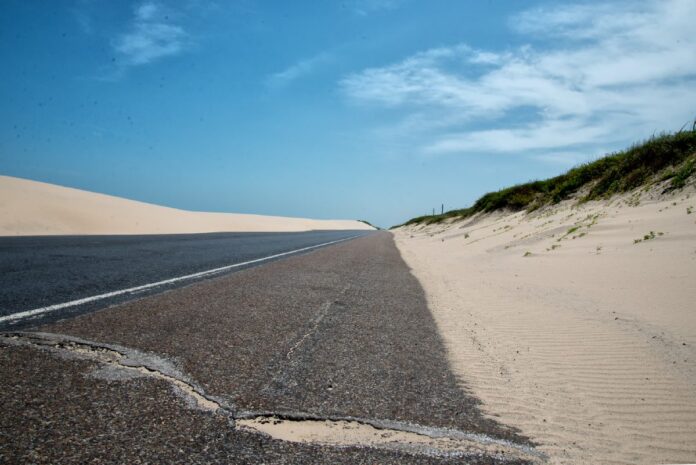PORT ISABEL — A $32 billion Costal Texas project proposed by the U.S. Army Corps of Engineers and the Texas General Land Office aims to save Texas’ coastal areas from being engulfed by the sea.
What does this mean for the Valley?
The project involves engineering, economic and environmental analyses for Texas coastal areas including South Padre Island.
The cost of the Island portion of the proposed project is estimated at $71.6 million to $83.1 million.
The plan proposes two miles of 12-foot-tall, 100 foot-wide sand dunes to be aligned with the existing beach and dune system on the beach.
The sand dunes would begin two miles from the Brazos Santiago Pass North Jetty system and end 4.2 miles from that same system.
U.S. Army Corps of Engineers Project Manager Kelly Burks-Copes said the sand dunes are designed to protect the Island by attenuating waves and reducing erosion on the Island.
U.S. Army Corps of Engineers and Texas General Land Office personnel have been traveling city to city this week to review the project with coastal communities.
The team hosted its third public meeting Thursday night at the Convention Center in Port Isabel with a crowd of about 100 attendees from surrounding cities and Cameron County officials.
Former Mayor of South Padre Island Barry Patel attended the public meeting and said he is excited about the project.
“I’m very pleased that finally Texas is actually getting involved with a federal study that will save our beaches, communities and infrastructures, not to mention of course, the energy infrastructure in the Galveston and Houston area.”
According to the project’s Coastal Texas Study, the Texas coast is subject to hazards, such as storm surges, coastal erosion, relative sea level rise, coastal storm surge, habitat loss and water quality degradation.
The Coastal Study Team believes each factor is placing the environmental and economic health of the Texas coast at risk of negatively impacting the state and national economy.
The Coastal Texas Study’s ecosystem restoration focuses on several areas, such as restoring fish and wildlife habitat, improving hydrologic connectivity, reducing erosion to shorelines, creating and restoring oyster reefs and implanting sediment management.
According to Texas Land Commissioner George P. Bush, one storm can cost many lives and billions of dollars in damage.
“The expense of doing nothing far outweighs the investment to protect and enhance our coast,” Bush stated in a press release. “Texas is not a state that happens to have a coast, Texas is a true coastal state. The Coastal Texas Study is about protecting our people, our economy and our national security.”
What are the next steps?
The Coastal Texas Study team is currently seeking public input to see if there’s anything missing that communities believe should be incorporated into the plan.
All comments regarding the Coastal Texas Study must be received or postmarked by Jan. 9, 2019.
After reviewing and addressing input, the Coastal Texas Study Team will create a final report that will be proposed for congressional authorization and funding.
Burks-Copes said the Coastal Texas Study Team expects to have a final report in 2021.
Construction of the plan in the final report would be built over a period of 10 to 15 years, depending on congressional authorization and partnerships.
According to Burks-Copes, if the plan receives $32 billion, construction is estimated to begin in 2025 and will be completed around 2035.
MORE INFO
The goal of the Coastal Texas Study is to enhance resiliency in coastal communities and improve capabilities to prepare for, resist, recover and adapt to coastal hazards.
The timeline
1. The study
2. Design — Estimated two to five years after authorization
3. Build — Estimated 10 to 15 years depending on Congress
4. Maintain — Minimum 50 years
For more information about the Coastal Texas Study, visit http://coastalstudy.texas.gov
To submit comments regarding the Coastal Texas Study:
Mail a letter to USACE, Galveston District, Attn: Mrs. Jennifer Morgan, Environmental Compliance Branch, Regional Planning and Environmental Center, P.O. Box 1229, Galveston, TX 77553-1229
Email [email protected].
Comments must be postmarked by Jan. 9, 2019.







